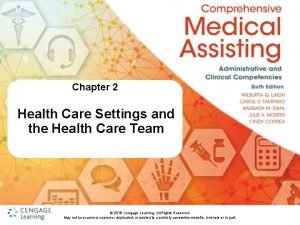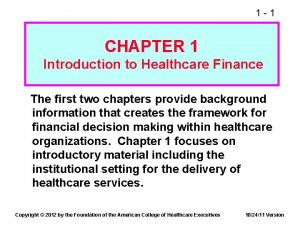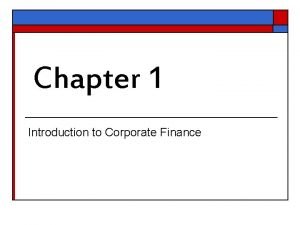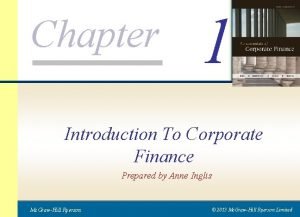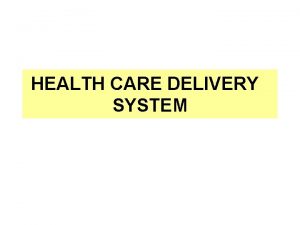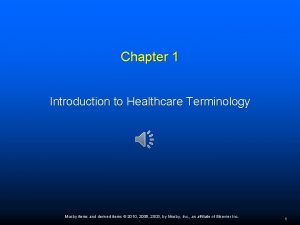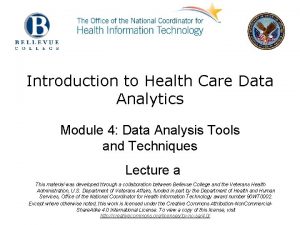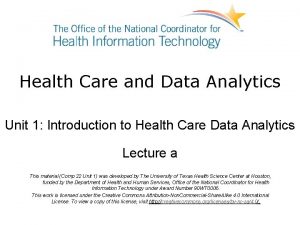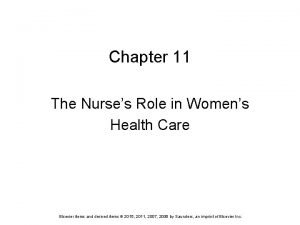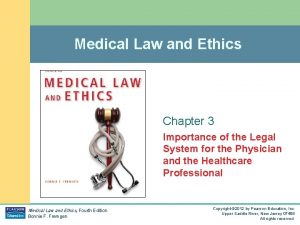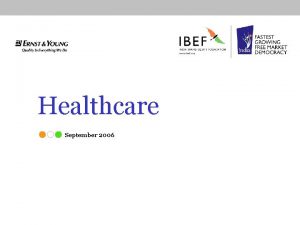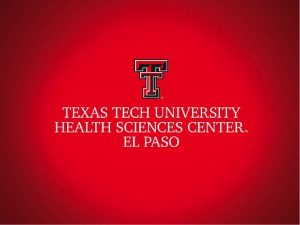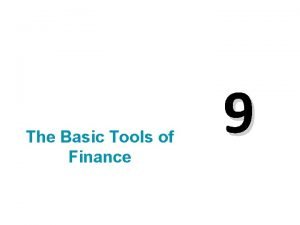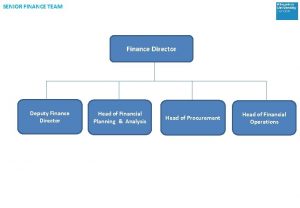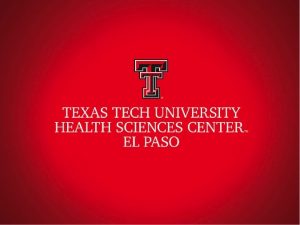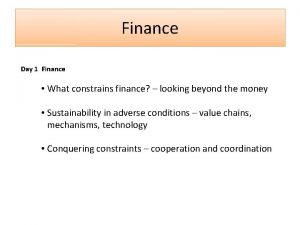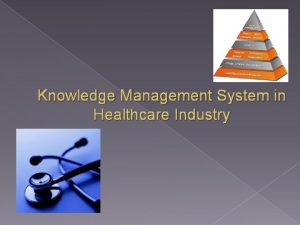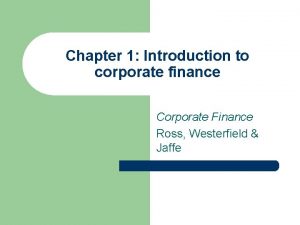1 1 CHAPTER 1 Introduction to Healthcare Finance

















- Slides: 17

1 -1 CHAPTER 1 Introduction to Healthcare Finance The first two chapters provide background information that creates the framework for financial decision making within healthcare organizations. Chapter 1 focuses on introductory material including the institutional setting for the delivery of healthcare services. Copyright © 2012 by the Foundation of the American College of Healthcare Executives 10/24/11 Version

1 -2 Defining Healthcare Finance n The definition depends on the context. l Policy maker or manager l Type of healthcare organization n For our purposes, healthcare finance is the practice of finance, including both accounting and financial management, within health services (provider) organizations.

1 -3 Accounting Versus Financial Management n Accounting concerns the measurement, in financial (dollar) terms, of events that reflect the resources, operations, and financing of an organization. n Financial management provides theory, concepts, and tools necessary to help managers make better financial decisions. ? Are the two disciplines independent?

1 -4 Course Goal n The primary goal of this course is to introduce students to the field of healthcare finance, including: l Principles and concepts. l Applications across a wide variety of provider settings. l The impact of alternative reimbursement methods. n Along the way, some important personal finance concepts also are discussed.

1 -5 Concept of a Business n A business has the following characteristics: l Obtains financing from the marketplace. l Uses the funds to buy assets. l Operates the assets to provide goods or services. l Sell the goods or services to create revenue. ? What is the difference between a business and a pure charity?

1 -6 The Role of Finance n The primary role of finance within any business is to plan for, acquire, and utilize resources to maximize the efficiency (and hence value) of the organization. n Finance activities include: l Planning and budgeting l Financial reporting l Capital investment decisions l Financing decisions l Working capital management l Contract management l Financial risk management

1 -7 The Four C’s The finance activities listed on the previous slide can be summarized by the four C’s: l Cost minimization l Cash sufficiency l Capital access l Control

1 -8 Finance Department Structure At large providers (typically hospitals), the finance department typically is organized as follows: Chief financial officer • Comptroller – Budgeting and reporting activities – Payables and receivables management • Treasurer – Acquisition and employment of capital – Debt management – Financial risk management ? What about a small medical practice?

1 -9 Health Services Settings n Health services are provided by numerous types of organizations in many different settings. n Applications presented in this course will include the following settings: l Hospital (inpatient) care l Ambulatory (outpatient) care l Long-term care l Integrated delivery systems

1 - 10 Regulatory Issues n Entry into the health services industry is heavily regulated. l Licensure l Certificate of need (CON) l Cost containment and rate review n Although designed primarily to protect consumers, critics of regulation contend that it protects providers more than consumers.

1 - 11 Legal Issues n The primary legal issue facing healthcare providers is professional liability (malpractice). n In addition, other issues include: l General liability l Antitrust l Right to die

1 - 12 Current Management Challenges n According to ACHE l Financial concerns l Medicaid reimbursement and regulation l Medicare reimbursement and regulation l Indigent care costs and bad debt losses n According to HFMA l Balancing financial and quality issues l Revenue cycle improvement l Access to capital (financing)

1 - 13 Organization of the Course n Healthcare environment l Alternative types of ownership l Taxes l Third-party payers l Reimbursement methods n Financial accounting l Basics l Income statement l Statement of changes in equity l Balance sheet l Statement of cash flows

1 - 14 Organization of the Course (Cont. ) n Managerial accounting l Basics l Cost behavior and profit planning l Cost allocation l Pricing and service decisions l Planning and budgeting n Basic financial analysis concepts l Time value analysis l Financial risk and return

1 - 15 Organization of the Course (Cont. ) n Long-term financing l Long-term debt capital l Equity (ownership) capital l Capital structure decisions l The cost of capital n Capital investment decisions l Cash flow estimation l Breakeven and profitability measures l Risk assessment l Risk incorporation

1 - 16 Organization of the Course (Cont. ) n Other potential topics l Working capital (current asset) management l Current asset (short-term) financing l Analyzing financial performance l Lease financing l Business valuation

1 - 17 Conclusion n This concludes our discussion of Chapter 1 (Introduction to Healthcare Finance). n Although not all concepts were discussed in class, you are responsible for all of the material in the text. ? Do you have any questions?
 Healthcare and the healthcare team chapter 2
Healthcare and the healthcare team chapter 2 Sports medicine meaning
Sports medicine meaning Healthcare finance department structure
Healthcare finance department structure Introduction to corporate finance what companies do
Introduction to corporate finance what companies do Foundation in personal finance chapter 1 answers
Foundation in personal finance chapter 1 answers Chapter 1 introduction to corporate finance
Chapter 1 introduction to corporate finance Chapter 1 introduction to corporate finance
Chapter 1 introduction to corporate finance Chapter 1 introduction to corporate finance
Chapter 1 introduction to corporate finance Introduction to healthcare delivery systems
Introduction to healthcare delivery systems L 101: introduction to health care leadership
L 101: introduction to health care leadership Rhinoalgia
Rhinoalgia Introduction to healthcare data analytics
Introduction to healthcare data analytics Introduction to healthcare data analytics
Introduction to healthcare data analytics Chapter 3 careers in health care answers
Chapter 3 careers in health care answers Chapter 11 the nurse's role in women's healthcare
Chapter 11 the nurse's role in women's healthcare Chapter 1 history and trends of health care
Chapter 1 history and trends of health care Multicompetent worker definition
Multicompetent worker definition Chapter 3 medical law and ethics
Chapter 3 medical law and ethics
